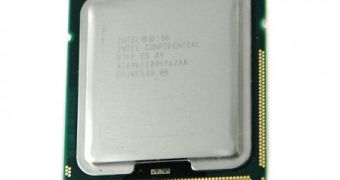A tech-based Polish website has published a test of the Intel Xeon Gulftown CPU a bit too early, according to Hardmac, which cites its own sources as saying that the 6-core, 32 nm processor is to be employed by future Mac Pros.
The Polish website PCLab released a test of the Intel Xeon Gulftown, a future CPU sporting 6 cores and engraved at 32 nm, but quickly removed it, a report of the English version of MacBidouille says. PCLab now explains, “We have been contacted by the reps of Intel Corporation. We agreed to remove the article. We will bring it back once Gulftown hits the stores, somewhere in 2010.”
Hardmac then goes to point out that future Mac Pros employing the new Intel processor would make a lot of sense, mostly because Apple needs to create a bigger gap between its current-generation desktop iMacs, and the Mac Pro configurations currently available from Apple. Other reasons cited by the website include the fact that the Gulftown processor is 50% faster than the corresponding quad core Xeon for parallel tasks, at equivalent clock speeds, even though the former has 50% more transistors.
The Gulftown also benefits from 32-nm engraving, allowing it to be less power-hungry – drains 50% less power in idle mode and 10% less in full loading mode, according to Hardmac. Apple is most likely enticed by the capabilities of the new Intel Xeon CPU. Current Mac Pro configurations ship with either one 2.66GHz or two 2.26GHz Quad-Core Intel Xeon “Nehalem” processors. And if that’s not an indication that new Mac Pros are getting Gulftown...
“According to our sources, this CPU will be installed in the future Mac Pro revision expected early 2010, in order to create a new gap between the iMac Core i7 and the Mac Pro models,” the Hardmac report reads. “This future Mac Pro will then offer 12 physical and 24 logical cores, more than enough power for heavy task[s], the bottleneck now being the way application[s] are coded to benefit from such raw power,” the site adds.

 14 DAY TRIAL //
14 DAY TRIAL //